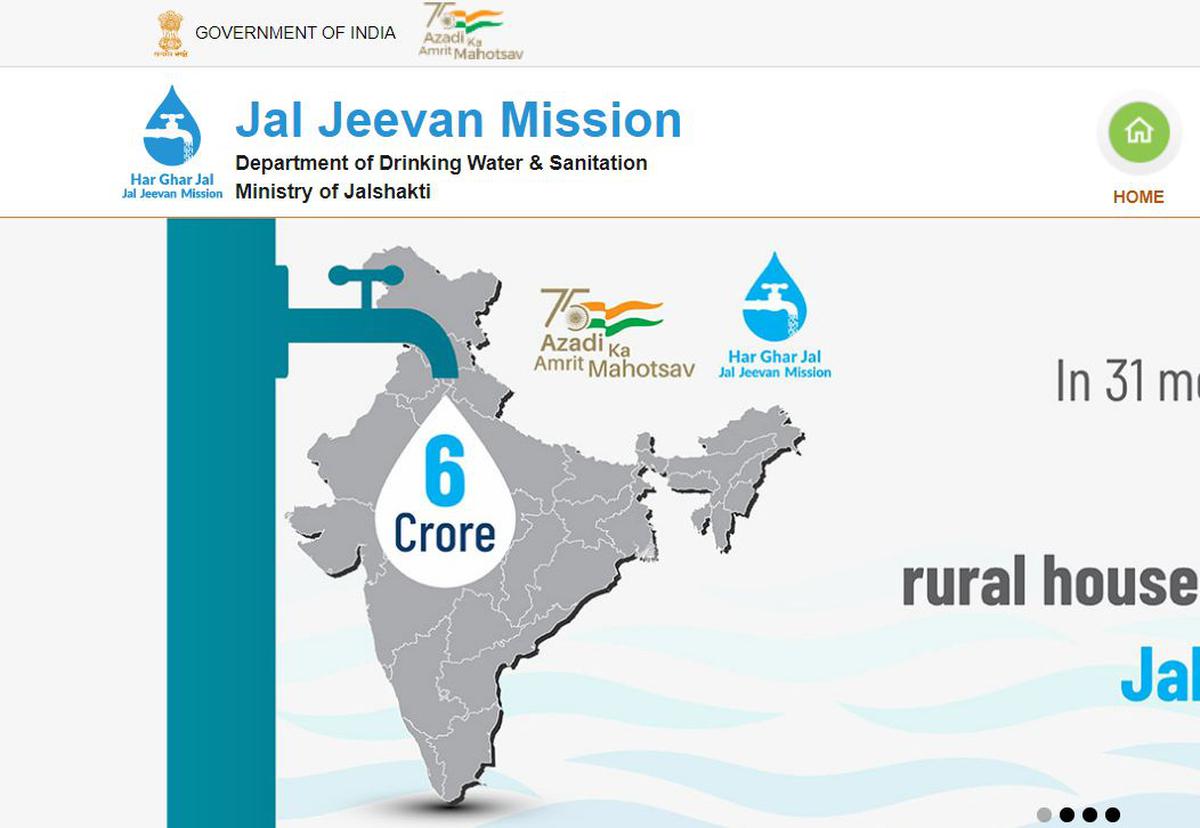A regional conference on Jal Jeevan Mission (JJM) was held here on Friday, with the focus on increasing community ownership of water supply infrastructure and service delivery in order to ensure long-term sustainability. The participants agreed that rather than “retrospective involvement,” rural communities should be involved in water supply plans from the start.
Ministers and officers from eight states and three union territories gathered in New Delhi for a conference to assess progress and chart a course for the JJM and Swachh Bharat Mission-Grameen. Gajendra Singh Shekhawat, Union Jal Shakti Minister, presided.
By 2024, the JJM aims to provide safe and sufficient drinking water to all families in rural areas of the country via tap connections. A goal has been set to provide 55 liters of water per person per day to every household in the communities where there has been a water shortage.
Mr. Shekhawat advised state governments to view the Jal Jeevan Mission as a “once-in-a-lifetime chance” to solve the issue of water scarcity and to move quickly to execute the project in order to meet the challenges. According to him, service delivery should be ensured in terms of acceptable quantity, prescribed quality, and regularity to ensure its long-term viability.
Jal Jeevan Mission launched in 2019
When the Jal Jeevan Mission was inaugurated in 2019, just 16.75 percent of rural families had access to tap water, according to the Union Minister. “Despite the pandemic’s setbacks, we were able to give more than 6.16 crore tap water connections in the last two years.” “Clean drinking water is available to around 9.40 crore homes in the rural, or 49 percent,” he said.
In 2022-23, the Central grant will be 32,608 crores under Jal Jeevan Mission and 2,167 crores under SBM-G to eight participating States and three UTs. In addition, the 15th Finance Commission provided 7,632 crores as a tied grant for drinking water and sanitation in 2022-23 to the eight States.
The day-long conference was attended by representatives from Rajasthan, Gujarat, Haryana, Goa, Himachal Pradesh, Punjab, Maharashtra, Uttarakhand, Dadra, and Nagar Haveli, Daman and Diu, Jammu & Kashmir, and Ladakh. Two of the UTs have already met the target in full, with Punjab achieving 99 percent and Himachal Pradesh achieving 93 percent.
Mr. Shekhawat added that state governments should develop and implement multi-village plans in order to meet the Jal Jeevan Mission’s goals, as federal money for the project may not be available after 2024. He said the Sujlam 2.0 program, which will organize rural communities and Panchayati Raj institutions, was launched last month to manage greywater through people’s participation.
Rajasthan Public Health Engineering Minister Mahesh Joshi requested that the rules for Central aid for Jal Jeevan Mission be changed to alleviate the financial burden on the States by offering a 90:10 split between the Centre and the States, rather than the current 50:50 split. Mr. Joshi also underlined the State’s desire that the projected Eastern Rajasthan Canal Project and Parwan irrigation project be designated as national projects.

